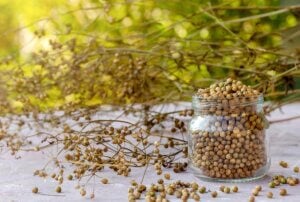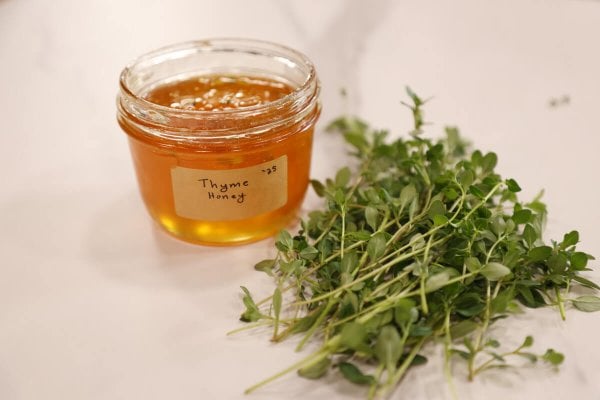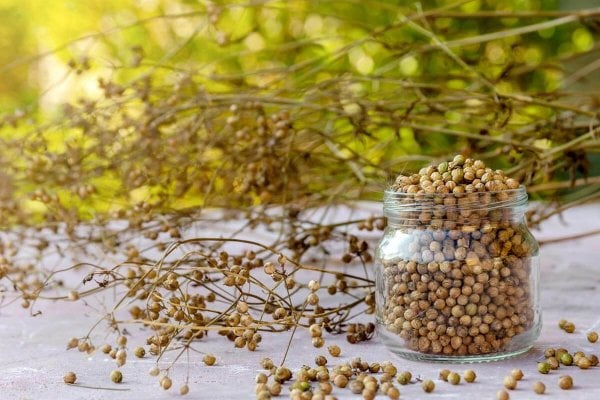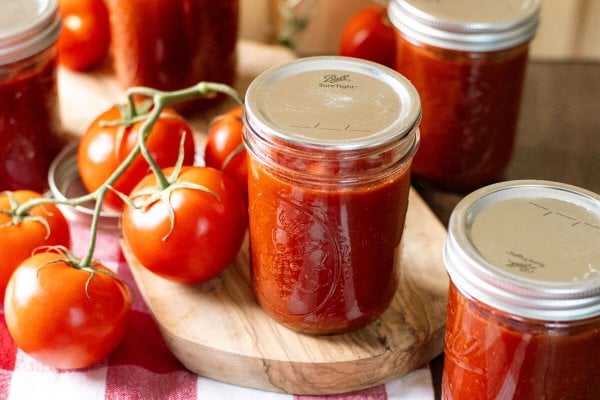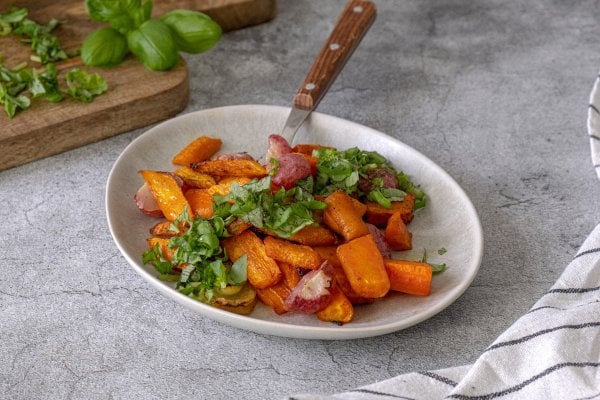






Learn to make this no sugar added, thick (yet soft and pliable) fruit leather recipe with the addition of a secret ingredient that also has added health benefits!
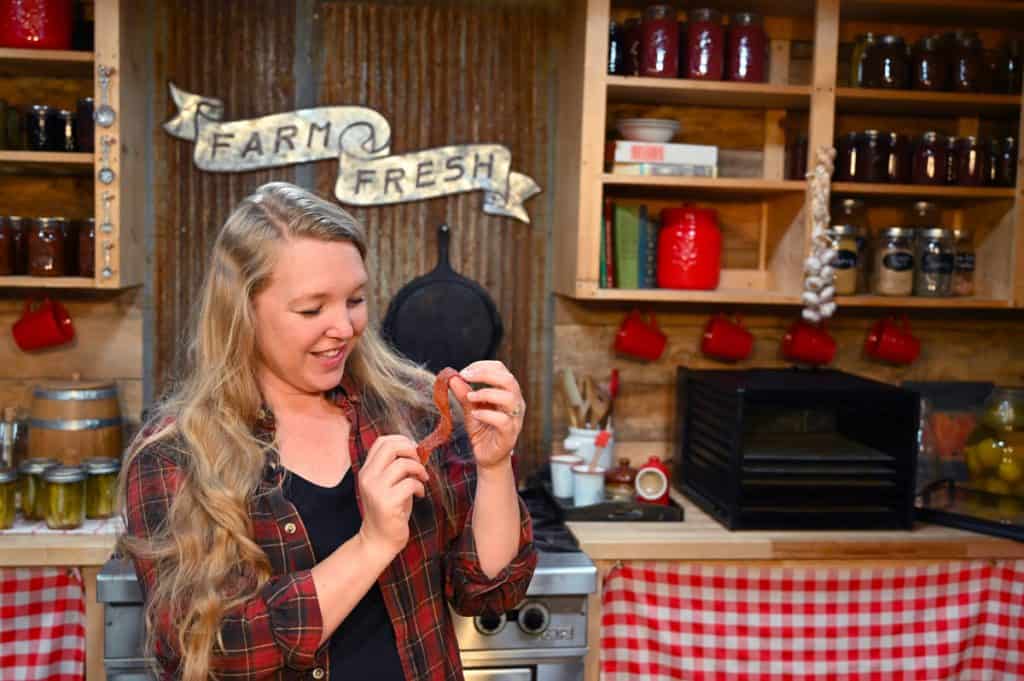
My dried fruit leather used to always turn out kind of flat, and while it was leathery, it certainly wasn’t the chewy fruit leather I remember from the grocery store growing up. I’m going to save you a lot of trial and error by letting you in on a secret ingredient that transforms homemade fruit leather into this amazing rival to store-bought fruit rolls.
Why I Love This Recipe
Here in the far north of Idaho, we only have fresh fruits and veggies during a few months of the year. The rest of the time we need to rely on our preservation methods. When it comes to soft fruits like berries, there are only a few preservation methods to choose from, and most of them require a lot of sugar.
Sugar can weaken the immune system, and I don’t like to encourage my family to eat any more sugar than what’s already in their diet. I wanted to come up with a fruit snack that didn’t have added sugar, and this fruit leather recipe fits the bill.
Homemade fruit leather recipes often yield a thin, tough-to-chew product with brittle edges. However, with the addition of pectin, you can have a thick yet soft and chewy outcome all at the same time. Many pectins require sugar for activation, but if you use Pomona pectin, it is activated by calcium (provided with the purchase of their pectin package), which allows for the use of grape juice concentrate to make a no sugar added fruit leather.
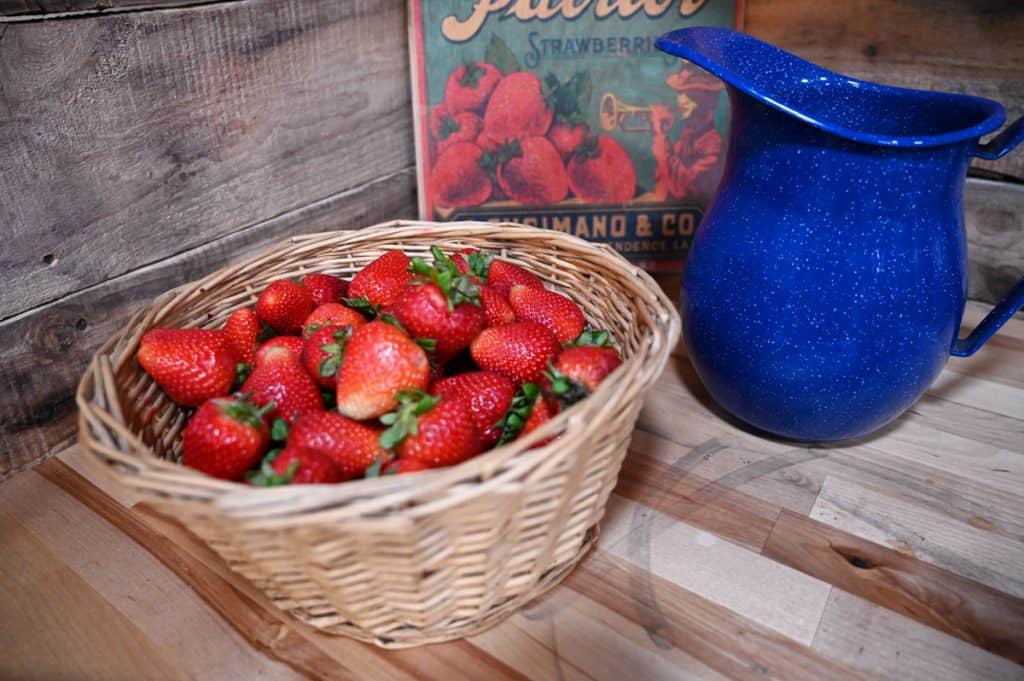
Strawberry Fruit Leather Recipe
Though we’re using our fresh-picked strawberries for this recipe, making fruit leather in the dehydrator is fantastic because you can swap out the fruit with whatever is in season!
Once our raspberries start producing, we’ll make raspberry fruit leather, when the cherries are ripe, we’ll make cherry fruit leather. In the fall, we enjoy pumpkin fruit leather.
You can even mix and match berries and make fun combinations like apple-blueberry fruit leather. To change the fruit, use the recipe card included with Pomona’s pectin and choose a simple all fruit or VERY low sugar jam recipe for whatever fruit you’re using.
Do keep in mind that some fruit has more water content than others, so they may take longer to dehydrate than others.
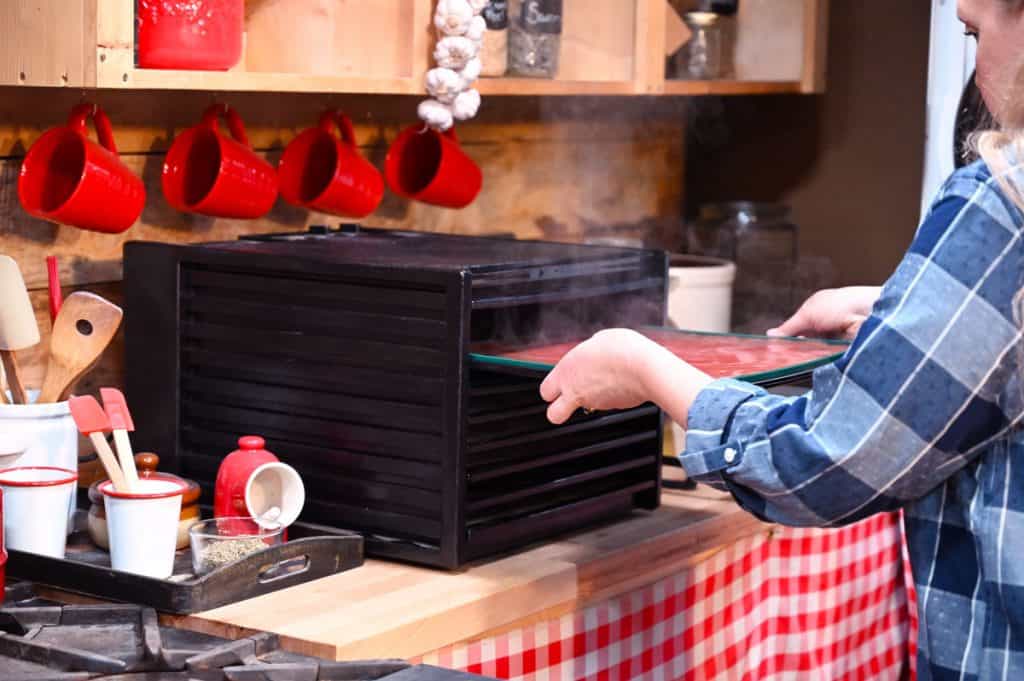
Supplies Needed
- High Powered Blender or Food Processor – Other berry preservation methods (as in jams or preserves) require only the mashing of berries, but with fruit leather, you want a smooth texture that is accomplished by fully pureed berries.
- Heavy Bottom Sauce Pan – When multiplying a batch, a stock pot works best.
- Large Ladle – Handy for transferring the hot fruit puree onto the dehydrator trays.
- Silicone Dehydrator Sheets – The short lip on these silicon mats make it so easy to get a consistent thickness. (Use code “JOSHT5” for 5% off!)
- Dehydrator – If you are in the market for a dehydrator, we recommend the Excalibur Dehydrator 3900B. If you do not have a dehydrator, you can alternatively use an oven, and rimmed baking sheets lined with parchment paper. However, to properly dehydrate instead of cooking the fruit, the temperature shouldn’t rise above 140 degrees. Keep in mind that many ovens don’t have a setting that goes below 200 degrees.
- Parchment Paper – We love using natural products as opposed to petroleum-based wax paper, and recommend If You Care Parchment found at Azure Standard. Homesteading Hack: If you’re a first-time Azure Standard customer, use coupon code “HOMESTEADINGFAMILY15” at checkout for 15% off your order of $100 or more!

Ingredients
- Pomona’s Pectin – Pectin is crucial for a thick and pliable fruit leather, but is also a good source of insoluble fiber as an added health benefit. Pomona brand is critical to use in order to make a no sugar added fruit leather and can be found in most grocery stores in small expensive packets. You can also find Pomona’s Pectin here at Azure, in small ½ pound bulk on Amazon, or larger 1 pound bulk on Amazon. Additionally, most pectins will not gel when a batch is multiplied, but with Pomona pectin, you can double or even quadruple this recipe and the pectin will still set.
- Fruit – We’re using 3 ½ pounds strawberries (washed and hulled) for this recipe, which will make approximately 6 cups of strawberry puree. If strawberries aren’t your favorite fruit, feel free to play with this recipe using 6 cups of a different fruit puree.
- White Grape Juice Concentrate – Just 2 cups of grape juice concentrate not only facilitates a healthier fruit snack, but also yields a better finished product. Sugar does not dehydrate well, making it difficult to have an evenly dehydrated product. Even when it’s fully dehydrated, the sugar leaves it feeling damp and sticky with inconsistent pockets of syrup. White grape juice concentrate can be purchased in the frozen section of your local grocery store. Make sure it is pure juice concentrate without any added sugar or other ingredients.

Step by Step Instructions
- Puree washed and hulled strawberries in a blender, and measure out six cups of puree.
- Prepare calcium water according to package instructions, add four teaspoons of calcium water to the berry puree, and mix well.
- Transfer fruit mixture to a heavy bottomed saucepan, and bring to a simmer over medium heat.
- Meanwhile, with a clean blender, add 2 cups of white grape juice concentrate, and turn on low speed.
- Slowly add the powdered pectin, and mix well for about two minutes.
- Prepare dehydrator trays to have at the ready. These next steps move quickly!
- Once the berry puree has been brought to a simmer, keep heat on, add grape juice concentrate mixture, and stir for a full minute.
- Remove from heat, and ladle mixture onto the dehydrator trays.
- Carefully place trays in the dehydrator.
- Dehydrate on low (110-115 degrees) for about 14 hours. Depending on the thickness, this will vary. Keep in mind that the texture of dehydrated foods change after they have cooled, so when checking your fruit leather for doneness, always let the leather cool completely first.
- Cut cooled fruit leather into strips (or cute shapes using a cookie cutter), and roll up using parchment paper.
- Store in an airtight container at room temperature.
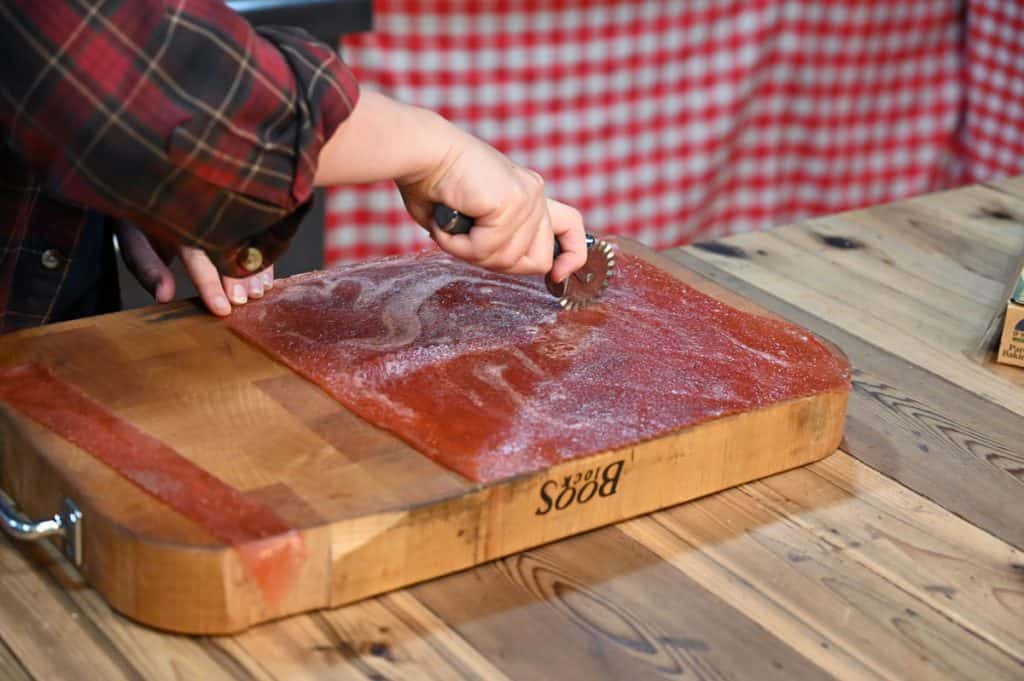
Did you make this recipe? We’d love for you to leave a star rating on the recipe card below, then take a photo and tag us on social media @homesteadingfamily so we can see!

More Fruit & Preserving Resources
- Lemon Sorbet with Lavender Essence
- How to Freeze Dry Strawberries
- Sparkling Apple Cider – Homemade
- Rhubarb Breakfast Cake Recipe
- Plum Jelly Recipe (+Time-Saving Trick)
- Canning Cherries at Home
- Preservation 101 – Dehydrating Food
- DIY Fruit Fly Trap: Easy Homemade Solution

Fruit Leather Recipe
Equipment
- High Powered Blender or Food Processor
- Heavy Bottom Sauce Pan
- Large Ladle
- Silicone Dehydrator Sheets
- Dehydrator
- Parchment Paper (optional)
Ingredients
- 4 tsp Pomona's Pectin
- 4 tsp calcium water comes with Pomona's Pectin
- 3.5 lbs strawberries washed and hulled
- 2 cups white grape juice concentrate
Instructions
- Puree washed and hulled strawberries in a blender and measure out six cups of puree.
- Prepare calcium water according to package instructions, add four teaspoons of calcium water to the berry puree and mix well.
- Transfer the fruit mixture to a heavy-bottomed saucepan and bring to a simmer over medium heat.
- Meanwhile, with a clean blender, add 2 cups of white grape juice concentrate and turn on low speed.
- Slowly add the powdered pectin and mix well for about two minutes.
- Prepare dehydrator trays to have at the ready. These next steps move quickly!
- Once the berry puree has been brought to a simmer, keep the heat on, add grape juice concentrate mixture, and stir for a full minute.
- Remove from heat and ladle mixture onto the dehydrator trays.
- Carefully place trays in the dehydrator.
- Dehydrate on low (110-115 degrees) for about 14 hours. Depending on the thickness, this will vary. Keep in mind that the texture of dehydrated foods change after they have cooled, so when checking your fruit leather for doneness, always let the leather cool completely first.
- Cut cooled fruit leather into strips (or cute shapes using a cookie cutter), and roll up using parchment paper.
- Store in an airtight container at room temperature.
Notes
- The silicone dehydrator sheets that are meant for fruit leather are really handy and definitely recommended for this recipe.
- If your mixture is thinner, you may want to check on your fruit leather after about 8 hours or so. If your mixture is thicker, check after 14 hours, then check every hour after that until they are done and no longer sticky in the middle.
- To check if fruit leather is done, lift the fruit leather off the silicone sheet, it should come off in one large sheet, or it may tear, but there should be none that is sticky or still soft like jam.
- Store fruit leather at room temperature, in the refrigerator, or freeze for long-term storage.




